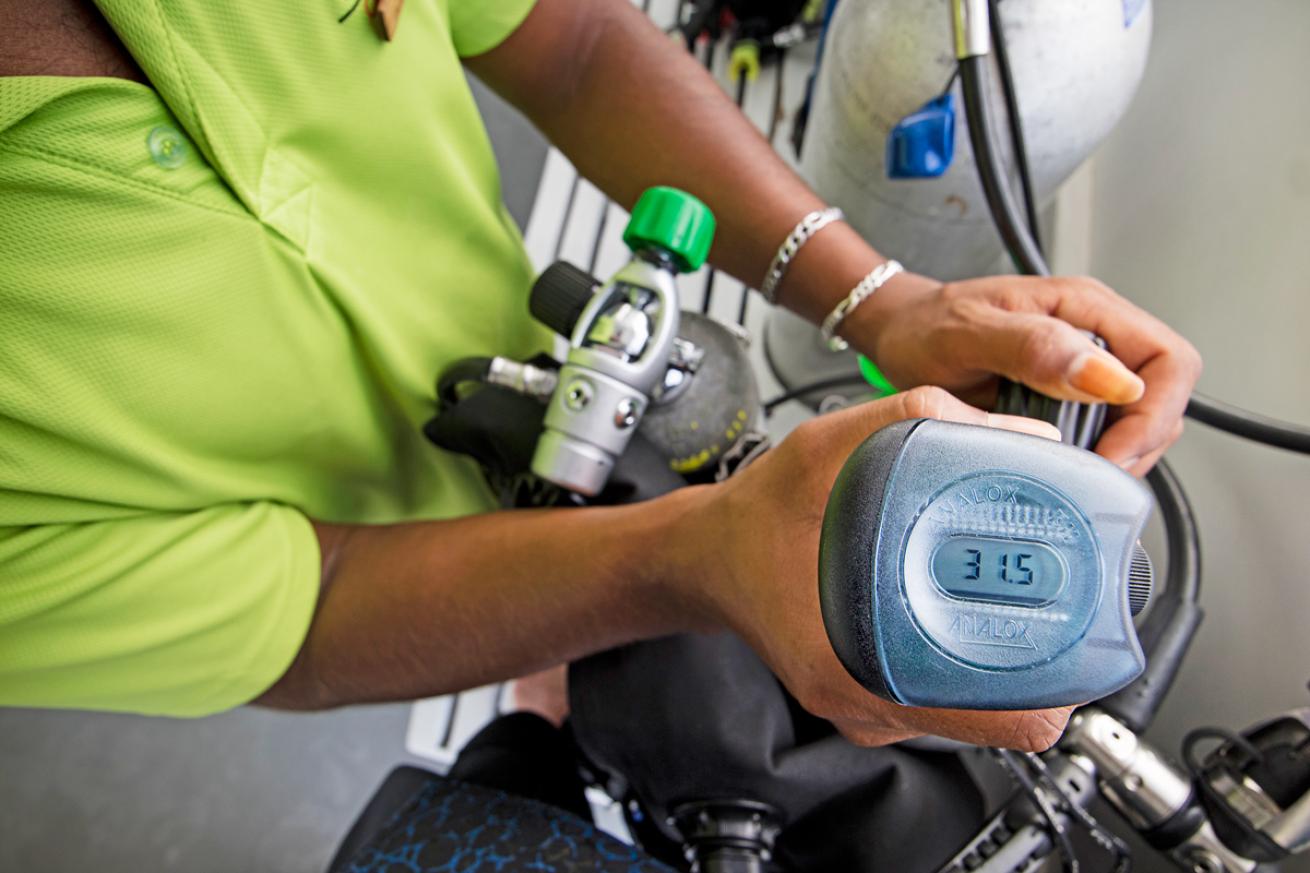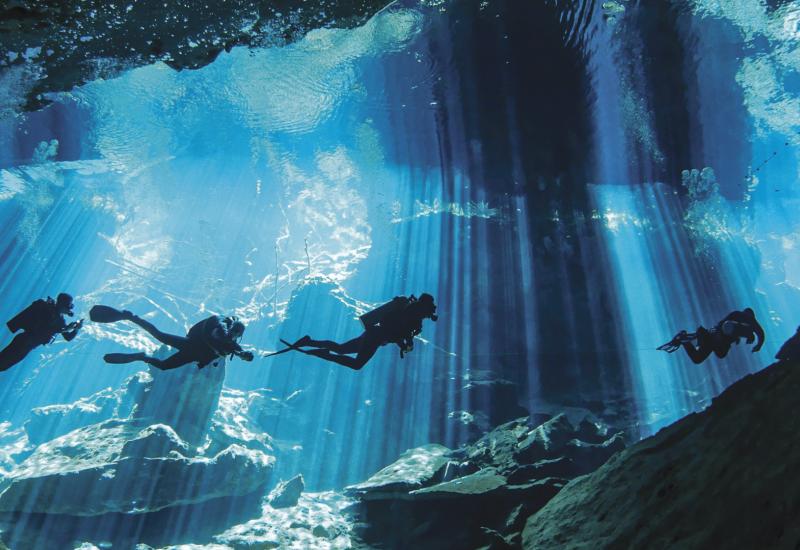Ask DAN: What Should I Know About Oxygen Toxicity?

Divers Alert NetworkIt is recommended to learn how to always check your breathing gas with an oxygen analyzer.
Human bodies are adapted to an atmosphere containing 21 percent oxygen. Divers using nitrox or other mixed gases are exposed to elevated partial pressures of oxygen, and thus incur a risk of oxygen toxicity. Oxygen toxicity may occur in divers using nitrox or mixed gases if they exceed the maximum operating depth for the gas they’re breathing. Cold, strenuous exercise, some medications, and other individual and environmental factors may increase the risk of oxygen toxicity
Recreational divers are advised to limit their oxygen partial pressure to 1.4 ATA. In addition, divers should always check their breathing gas with an oxygen analyzer before breathing off any tank.
Signs and Symptoms of Oxygen Toxicity May Include:
- Flashing lights in front of your eyes
- Tunnel vision
- Loud ringing in the ears (tinnitus)
- Confusion
- Lethargy
- Nausea and vertigo
- Numbness or tingling
- Muscular twitching (especially lips)
If you experience any of these symptoms, alert your buddy and promptly make a controlled ascent to the surface. While these signs and symptoms are not inherently harmful, they may precede a convulsion. Therefore you should begin your ascent (and, if applicable, switch to a breathing gas with a lower fraction of oxygen) as soon as possible.
The most serious symptom of oxygen toxicity is a convulsion, or seizure. This may occur without warning and is dangerous underwater as it will likely lead to fatal drowning. If you witness a diver experience a seizure, do the following:
Release their weights. If they are in a drysuit, leave their weights in place if it will keep them face-up on the surface.
Leave their mouthpiece in their mouth and hold it in place. If it is not there, do not attempt to replace it.
Grasp the diver around their chest and make a controlled ascent to the surface, maintaining a slight pressure on the diver’s chest to assist exhalation.
Inflate the diver’s BCD as needed on ascent. Do not release your weight belt or inflate your BCD. At the surface, inflate their BCD if you haven’t already.
Signal for emergency pickup.
Tilt their head back to open the airway once the convulsion has subsided.
Ensure they are breathing. A trained provider can initiate mouth-to-mouth breathing if necessary.
Monitor for signs of decompression illness and respond appropriately.
The main goal while the injured diver is in the water is to keep them from drowning. Next is to ensure that the airway is open after the convulsion stops by keeping the neck extended.
Look for foreign bodies in the trachea. A diver can bite off parts of the mouthpiece during a convulsion, which can block the airway. In these cases, the injured diver will begin coughing as they return to consciousness or may try to breathe but not get any air into the lungs. A trained provider should respond to this foreign-body obstruction of the trachea.
Because of the seizure risk, central nervous system (CNS) oxygen toxicity is of the greatest concern to divers. Pulmonary oxygen toxicity is not of concern except in very long technical dives (extended cave or rebreather dives, for example) lasting six to 12 hours or more. Prolonged dives within the safe limits for CNS oxygen toxicity may cause ocular toxicity, which manifests as a narrowing of the visual field and myopia.
Related Reading: Ask DAN: What Do I Need to Know About Immersion Pulmonary Edema?
During hyperbaric chamber treatment divers may be exposed to much higher oxygen pressures than would be safe to use while diving. The oxygen pressure used during treatment represents a balance between the expected benefit and the potential risk. In general, oxygen is better tolerated in dry, resting conditions than in wet conditions while exercising. In addition, there is no risk of drowning in a dry hyperbaric chamber, which is the major concern with oxygen toxicity in diving.
Be aware that oxygen toxicity is unpredictable. Divers have experienced convulsions at shallow depths under conditions where most experts would not have expected them to occur. Keep in mind that what you get in your cylinder may be different from what you expect. Make sure you have a method of analyzing the amount of oxygen in the tank, independent of the filling station.
Consider your risks when using nitrox. Training, experience and thorough knowledge of nitrox diving by everyone involved are essential.
.










